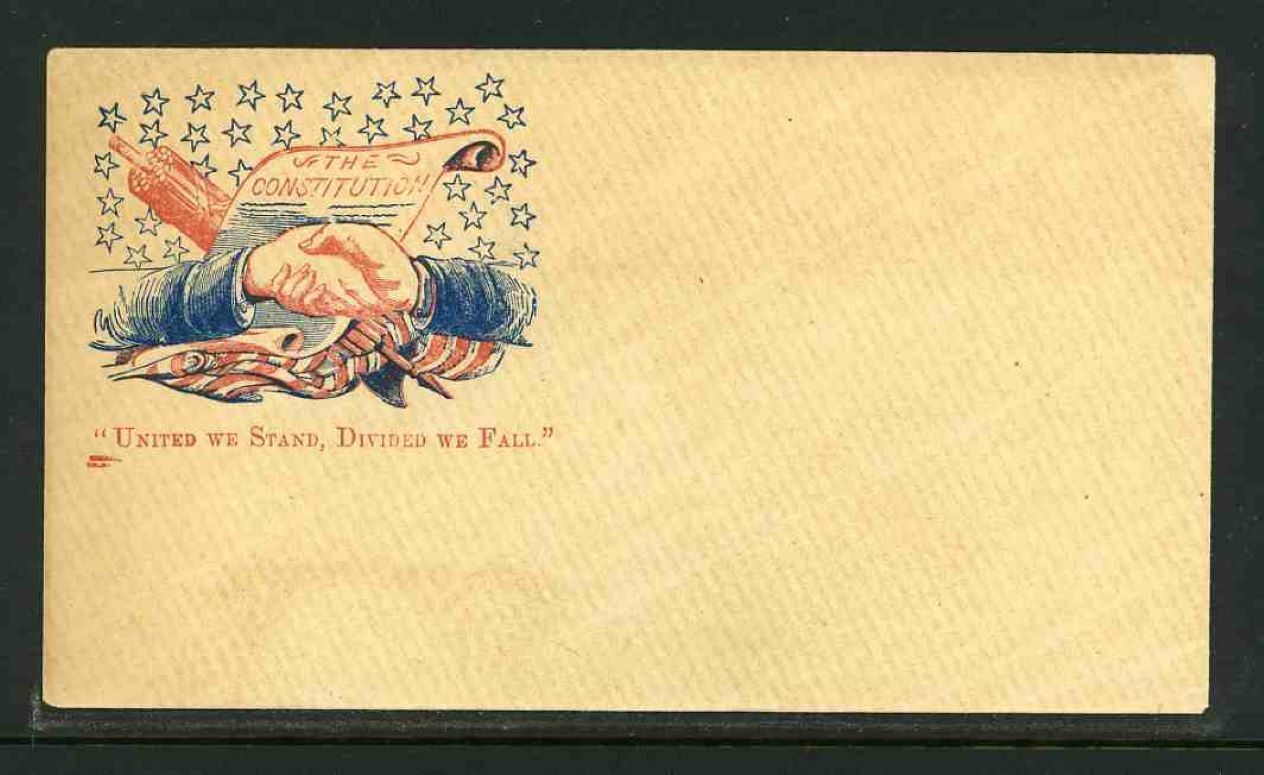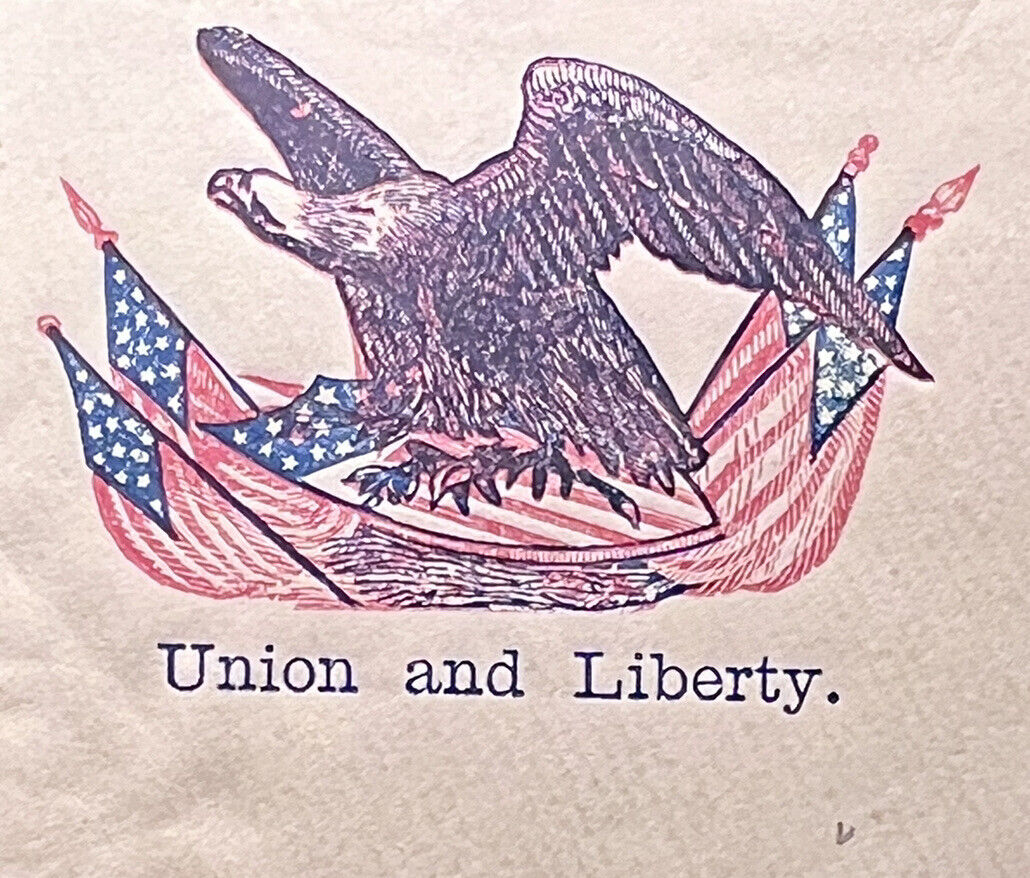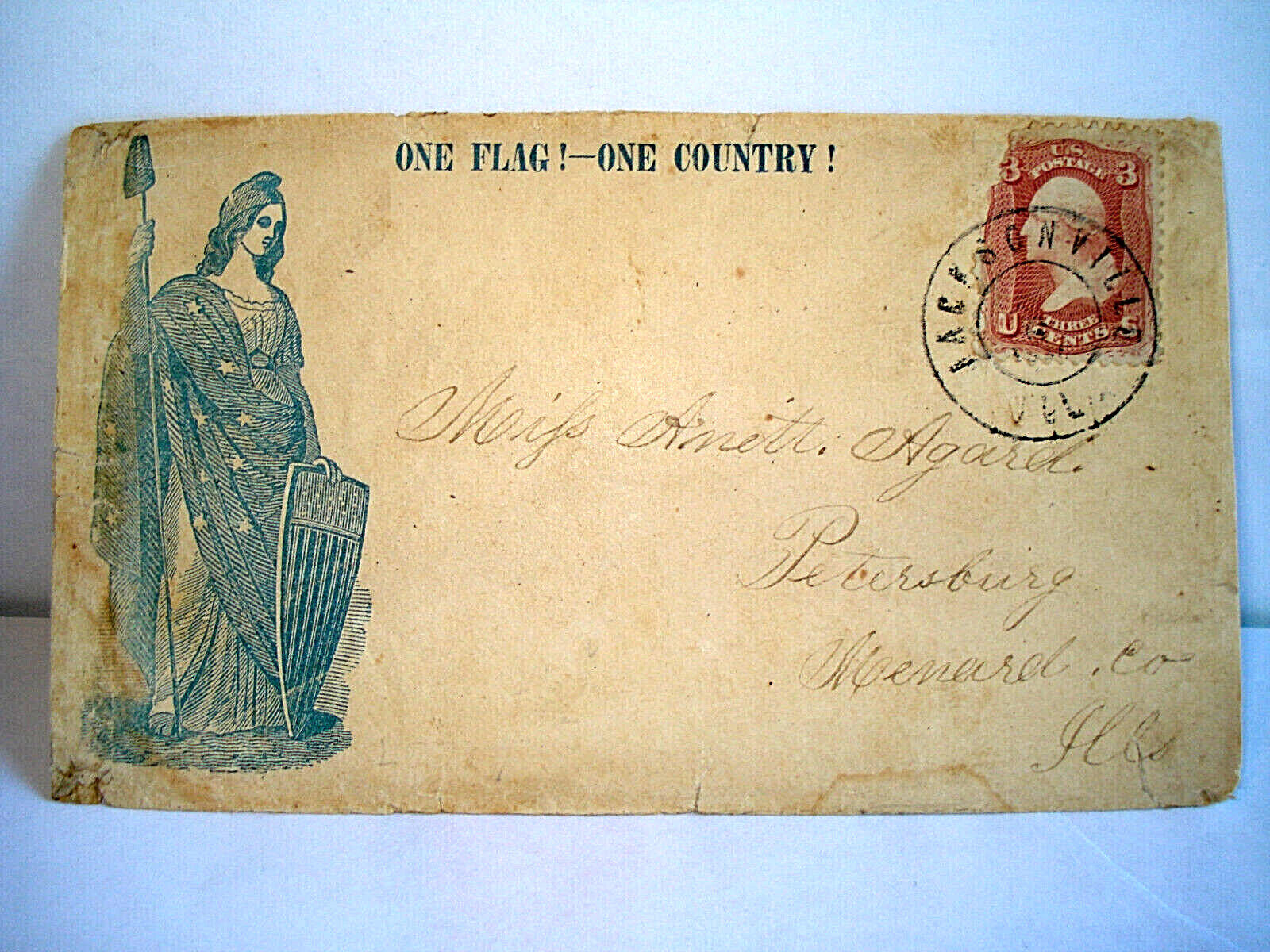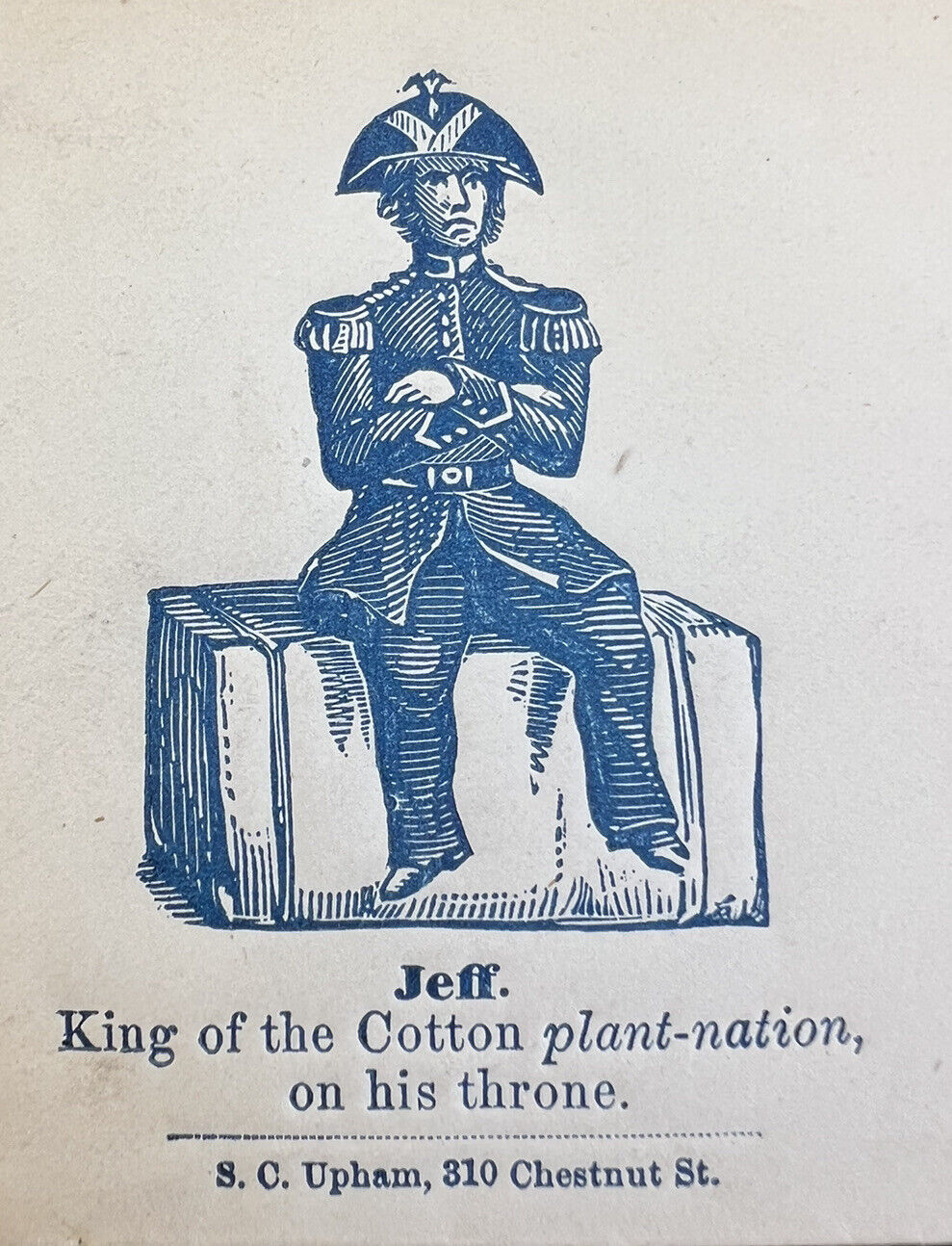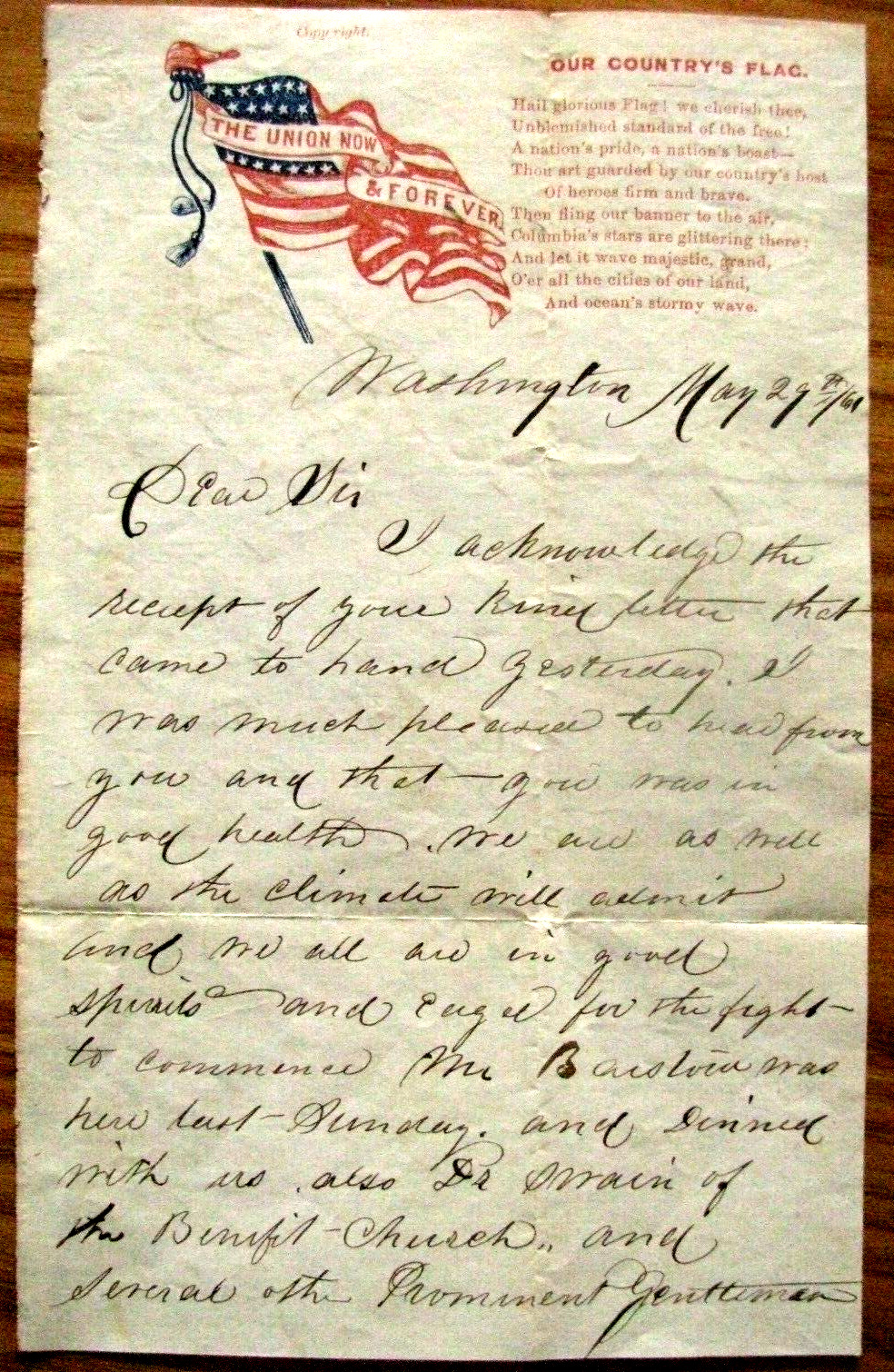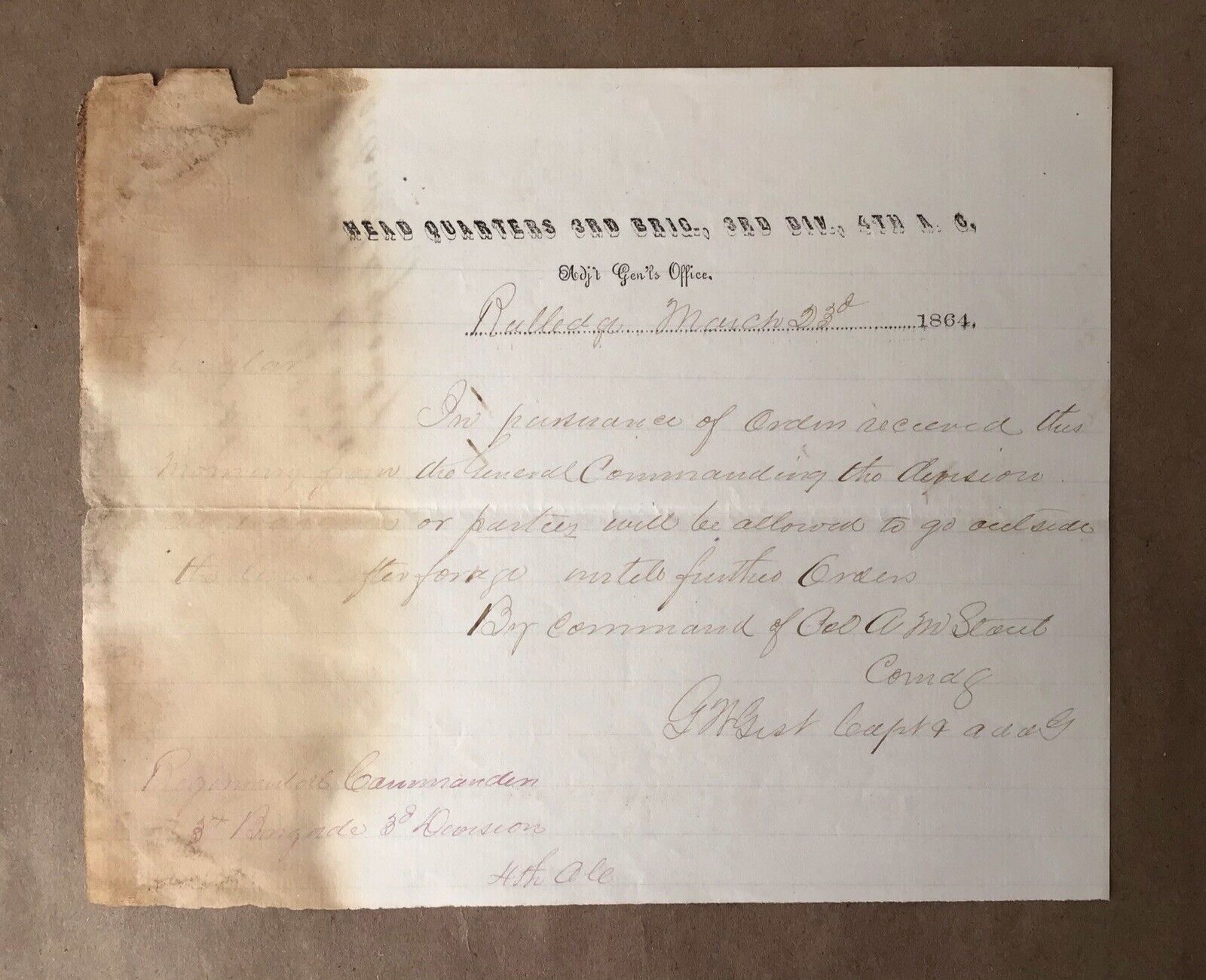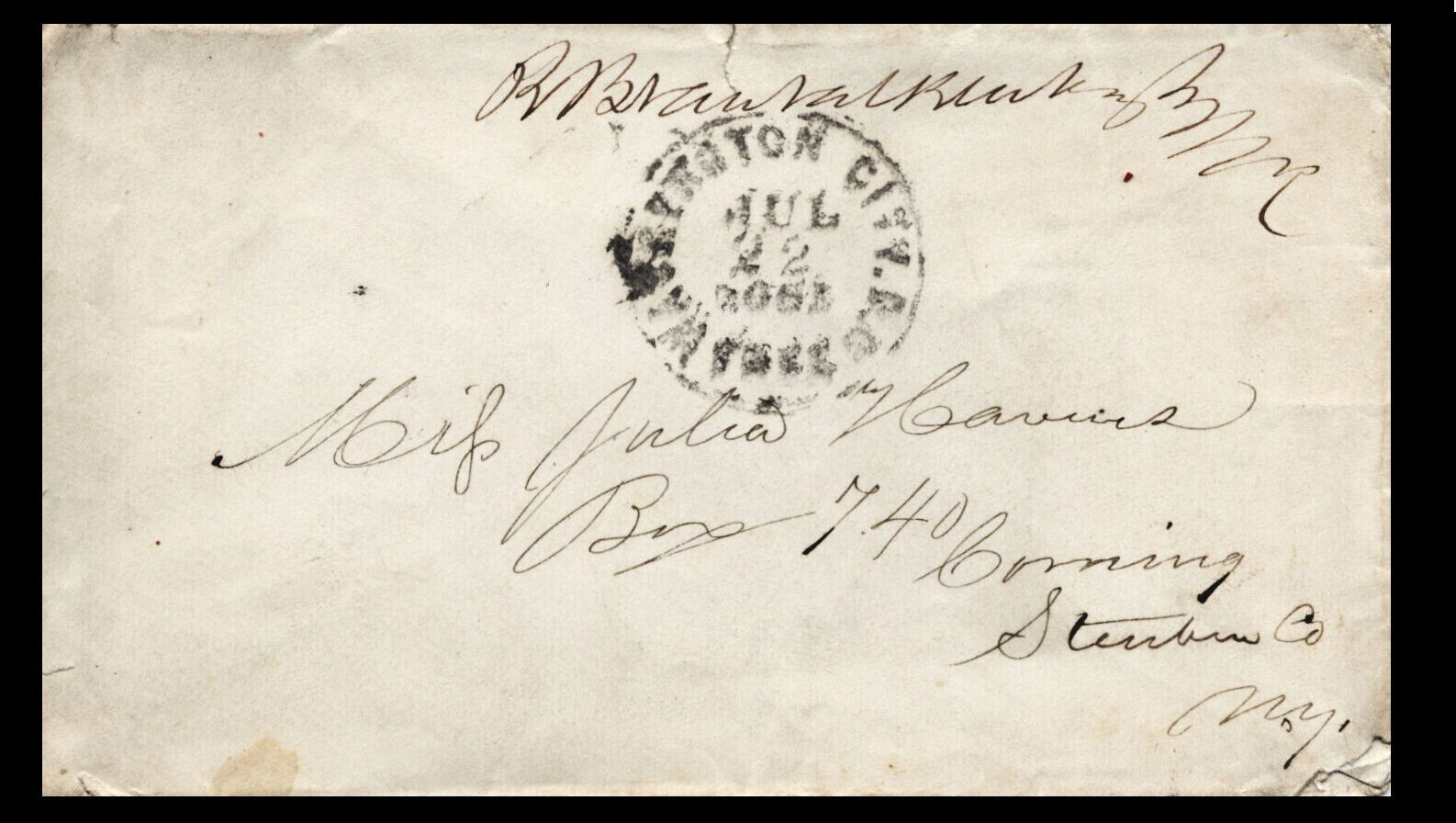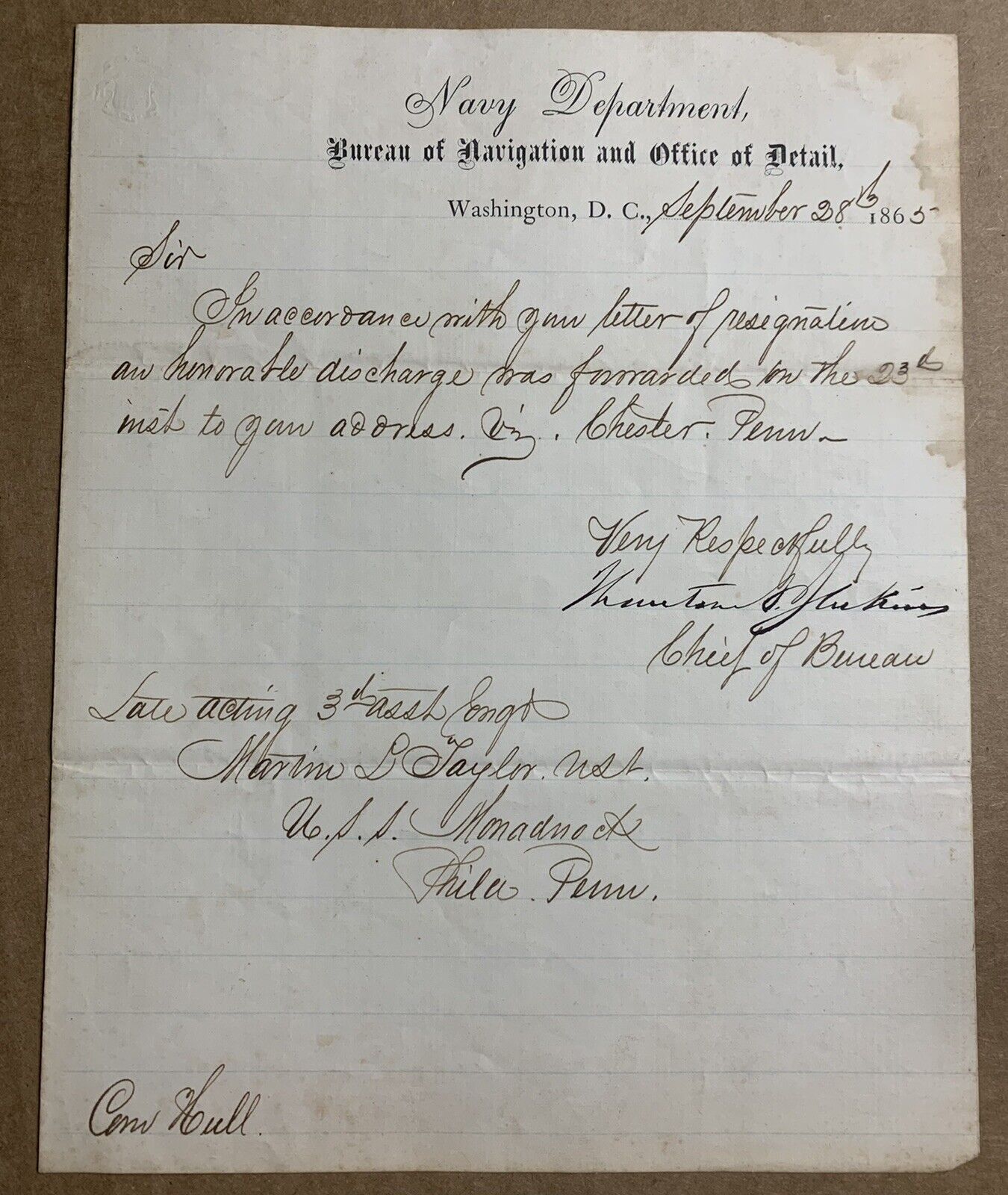-40%
CIVIL WAR SATIRE JOURNALIST POET EDITOR SLAVERY GOVERNOR VT SAXE LETTER SIGNED !
$ 10.55
- Description
- Size Guide
Description
Here’s an Autograph Note Signed byJOHN GODFREY SAXE
(1816 – 1887)
CIVIL WAR ERA AMERICAN POET, PUNSTER, SATIRICAL AUTHOR, EDITOR and POLITICIAN
-&-
UNSUCCESSFUL NORTHERN DEMOCRATIC PARTY CANDIDATE FOR GOVERNOR OF VERMONT IN 1859 -
ADVOCATING A NON-INTERFERENCE POLICY ON SLAVERY AND SUPPORTED ILLINOIS
SENATOR DOUGLAS
'S POLICY OF "POPULAR SOVEREIGNTY", A POSITION WHICH RENDERED THE POET EXTREMELY UNPOPULAR IN REPUBLICAN VERMONT
!
<>
HERE’s AN AUTOGRAPH NOTE SIGNED BY SAXE TO MISS HATTIE MERRYFIELD THAT READS:
“Fair stranger –
A lady’s covenant My ready attention endures:
“Tis but an indifferent “hand,”’ and ‘Rest ‘les.
Very respectfully
yours,
Jno. G. Saxe ~”
The entire document measures 8½” x 6” and is in VERY FINE CONDITION.
<
<[
:
][
:
]>
>
BIOGRAPHY OF THE HONORABLE
JOHN G. SAXE
John Godfrey Saxe I
(June 2, 1816 – March 31, 1887) was an
American
poet
best known for his re-telling of the Indian parable "
The Blind Men and the Elephant
,
" which introduced the story to a Western audience.
Biography
Saxe was born in 1816 in
Highgate, Vermont
at
Saxe's Mills
, where his settler grandfather, John Saxe (Johannes Sachse) a German immigrant and Loyalist to the Crown, built the area's first
gristmill
in 1786. Saxe was the son of
Peter Saxe
, miller, judge and periodic member of the
Vermont General Assembly
; and Elizabeth Jewett of
Weybridge, Vermont
. The poet was named for two of his paternal uncles, John and Godfrey, who had died as young men before his birth. Raised in a strict Methodist home, Saxe was first sent, in 1835, to
Wesleyan University
which he left after a year, and then to
Middlebury College
, from which he graduated in 1839.
In 1841 he married Sophia Newell Sollace, a sister of a Middlebury classmate with whom he had a son,
John Theodore Saxe
.
He was admitted to the Vermont bar in 1843 and tried to run a business with his dutiful and pious older brother,
Charles Jewett Saxe
.
The words "dutiful" and "pious" never applied to the aspiring satirist. Bored by his legal work, Saxe began publishing poems for
The Knickerbocker
, of which "The Rhyme of the Rail" is his most famous early work. He soon caught the attention of the prominent Boston publishing house,
Ticknor and Fields
. Though he received no royalties for his first volume, it ran to ten reprintings and eventually outsold works by
Nathaniel Hawthorne
and
Alfred, Lord Tennyson
.
His poem "The Puzzled Census-Taker" amused many and "Rhyme of the Rail" was possibly the most admired poem of the period about rail travel. Saxe was editor of the "Sentinel" in
Burlington, Vermont
from 1850 to 1856.
Saxe became a sought after speaker, toured frequently and stayed prolific throughout the 1850s. In 1859 he ran unsuccessfully for
Governor of Vermont
. As a northern Democrat, he advocated a non-interference policy on slavery and supported Illinois
Senator Douglas
's policy of "popular sovereignty", a position which rendered the poet extremely unpopular in Republican Vermont. After his second, and even more punishing electoral defeat, Saxe left his home state in 1860 for neighboring
Albany, New York
.
Saxe spent his summers in
Saratoga
, contributed articles for the
Albany Evening Journal
and
Albany Morning Argus
, and published poems in
Harper's
,
The Atlantic
, and the
Knickerbocker
and remained popular on the lecture circuit. "The Proud Miss McBride" and "Song of Saratoga" were some of famous works in this period. However, his attempts to re-enter politics remained unsuccessful.
Always mercurial, Saxe became more erratic following the death of his oldest brother in 1867. He was not temperamentally suited to assume the role of head of the family. Instead the poet's son, John Theodore Saxe, took the reins of his brother's lumber firm and managed the family's finances. The 1870s, while living in
Carroll Gardens
, Brooklyn, began a series of woes for Saxe. His youngest daughter died of
tuberculosis
. In 1875 he suffered head injuries in a rail accident near
Wheeling, West Virginia
, from which he never fully recovered, and then over the next several years his two oldest daughters, his eldest son, and daughter-in-law also died of tuberculosis. In 1879 his wife, under the strain of so many tragedies, burst a blood vessel in her brain and collapsed and died. Including a young son who died in the 1840s, Mr. Saxe had buried five of his six children as well as his wife.
Mr. Saxe sank deep into
depression
and was moved back to Albany to live with his last surviving child, Charles. His decline from the rollicking poet to grieving recluse earned the sympathy of the people of Albany and when he died in 1887, the
New York State Assembly
ordered his likeness to be chiseled into the "poet's corner" of the
Great Western Staircase
in the
New York State Capitol
.
Legacy
His best remembered poem "The Blind Men and the Elephant," a version of the ancient tale
Blind men and an elephant
, was not his most famous in his day. Though a satirist, his poems written during more somber periods remain some of his most beautiful and enduring, including "Little Jerry the Miller" about his father's mill assistant. Few of the satirical works which had made him famous are read today.
The poet's orphaned grandson,
John Godfrey Saxe II
, became a New York State senator, President of the New York Bar, and counsel of Columbia University.
According to Fred Shapiro, author of the
Yale Book of Quotations
, the
Daily Cleveland Herald
in its issue of Mar. 29, 1869, quotes Saxe as saying “Laws, like sausages, cease to inspire respect in proportion as we know how they are made."
Bibliography
The Poems of John Godfrey Saxe
(Highgate Edition), Boston: Houghton, Mifflin and Company, 1881, 491 pp.
John G. Saxe,
Poems
(New enlarged edition), Ticknor, Reed and Fields, 1849.
References
1.
Martin Gardner (1 September 1995).
Famous Poems from Bygone Days
. Courier Dover Publications. p. 124.
ISBN
978-0-486-28623-5
. Retrieved 25 August 2012
.
2.
John J. Duffy; Samuel B. Hand; Ralph H. Orth (1 August 2003).
The Vermont Encyclopedia
. UPNE. p. 157.
ISBN
978-1-58465-086-7
. Retrieved 25 August 2012
.
3.
Martin Gardner (15 December 1992).
Best Remembered Poems
. Courier Dover Publications. p. 149.
ISBN
978-0-486-27165-1
.
4.
"John G. Saxe Dead, 75. General Counsel for Columbia. Headed State Bar. Expert on Election Statutes"
.
New York Times
. April 18, 1953
.
"Born in Saratoga, NY, on June 25, 1877, he was the son of John Theodore Saxe, an Albany lumber..., and Mary Bosworth Saxe. He was a grandson of John Godfrey ..."
5.
Languagehat
.
<>
THE POEMS OF JOHN GODFREY SAXE
(1872)
BY
JOHN GODFREY SAXE
“THE BLIND MEN AND THE ELEPHANT”
A
HINDOO
FABLE.
I.
I
T was six men of Indostan
To learning much inclined,
Who went to see the Elephant
(Though all of them were blind),
That each by observation
Might satisfy his mind.
II.
The
First
approached the Elephant,
And happening to fall
Against his broad and sturdy side,
At once began to bawl:
"God bless me!—but the Elephant
Is very like a wall!"
III.
The
Second
, feeling of the tusk,
Cried: "Ho!—what have we here
So very round and smooth and sharp?
To me 't is mighty clear
This wonder of an Elephant
Is very like a spear!"
IV.
The
Third
approached the animal,
And happening to take
The squirming trunk within his hands,
Thus boldly up and spake:
"I see," quoth he, "the Elephant
Is very like a snake!"
V.
The
Fourth
reached out his eager hand,
And felt about the knee.
"What most this wondrous beast is like
Is mighty plain," quoth he;
"'T is clear enough the Elephant
Is very like a tree!"
VI.
The
Fifth
, who chanced to touch the ear,
Said: "E'en the blindest man
Can tell what this resembles most;
Deny the fact who can,
This marvel of an Elephant
Is very like a fan!"
VII.
The
Sixth
no sooner had begun
About the beast to grope,
Than, seizing on the swinging tail
That fell within his scope,
"I see," quoth he, "the Elephant
Is very like a rope!"
VIII.
And so these men of Indostan
Disputed loud and long,
Each in his own opinion
Exceeding stiff and strong,
Though each was partly in the right,
And all were in the wrong!
MORAL.
So, oft in theologic wars
The disputants, I ween,
Rail on in utter ignorance
Of what each other mean,
And prate about an Elephant
Not one of them has seen!
---
The
parable
of the
blind men and an elephant
is a story of a group of blind men who have never come across an
elephant
before and who learn and imagine what the elephant is like by touching it. Each blind man feels a different part of the elephant's body, but only one part, such as the side or the tusk. They then describe the elephant based on their limited experience and their descriptions of the elephant are different from each other. In some versions, they come to suspect that the other person is dishonest and they come to blows. The moral of the parable is that humans have a tendency to claim absolute truth based on their limited, subjective experience as they ignore other people's limited, subjective experiences which may be equally true. The parable originated in the ancient
Indian subcontinent
, from where it has been widely diffused.
The Buddhist text
Tittha Sutta
, Udāna 6.4, Khuddaka Nikaya
, contains one of the earliest versions of the story. The Tittha sutta is dated to around c. 500
BCE
, during the lifetime of
the Buddha
.
An alternative version of the parable describes sighted men, experiencing a large statue on a dark night, or feeling a large object while being blindfolded. They then describe what it is they have experienced. In its various versions, it is a parable that has crossed between many religious traditions and is part of
Jain
,
Hindu
and
Buddhist
texts of 1st millennium CE or before. The story also appears in 2nd millennium
Sufi
and
Baháʼí Faith
lore. The tale later became well known in Europe, with 19th century American poet
John Godfrey Saxe
creating
his own version
as a poem, with a final verse that explains that the elephant is a metaphor for God, and the various blind men represent religions that disagree on something no one has fully experienced. The story has been published in many books for adults and children, and interpreted in a variety of ways.
I am a proud member of the Universal Autograph Collectors Club (UACC), The Ephemera Society of America, the Manuscript Society & the American Political Items Collectors (APIC) (member name: John Lissandrello). I subscribe to each organizations' code of ethics and authenticity is guaranteed. ~Providing quality service & historical memorabilia online for over twenty years.~
WE ONLY SELL GENUINE ITEMS, i.e., NO REPRODUCTIONS, FAKES OR COPIES!



